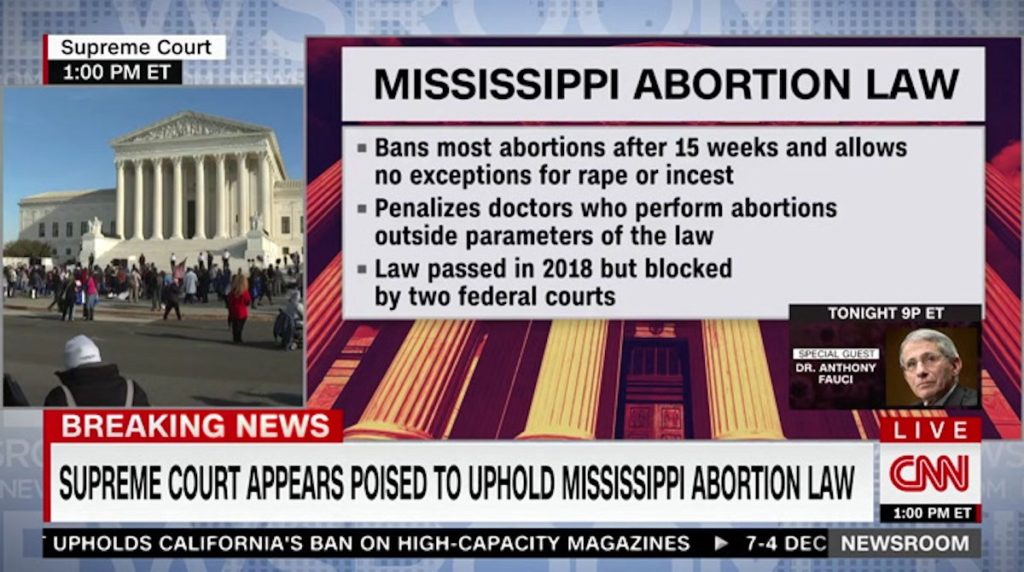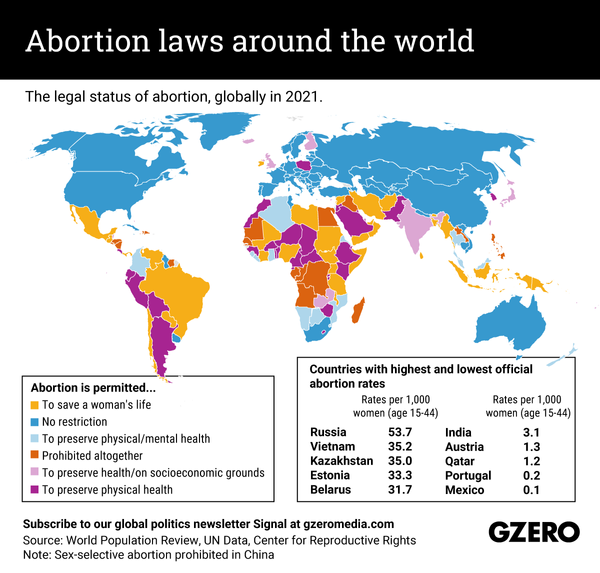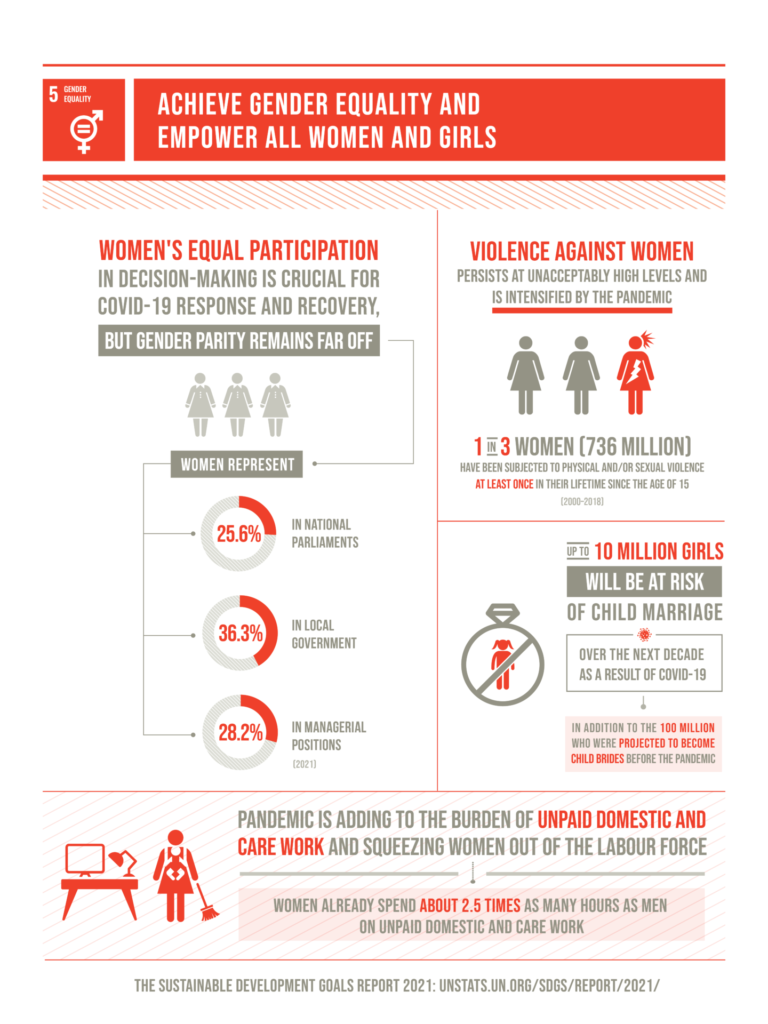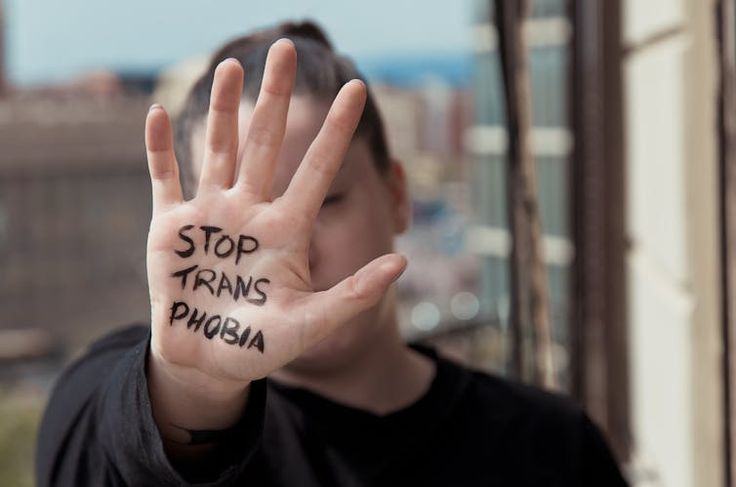America’s War on Women is About to Get a Lot Worse
If You Want to Know What the Future is Like for American Women,
It’s Being Subhuman Breeders in a Fascist Theocracy

It was never a question of “if,” but only “when.” Now America’s hard right is in sight of a goal it’s been after for decades: Roe v Wade is, as the pundits say, “poised to be overturned.” Hence, the unbelievably grotesque, almost obscene spectacle of one justice, an accused sexual predator, and another, a member of a fundamentalist sect, where women pledge submission to men, are deciding the fate of the rights of America’s women. Read more of this frank opinion from Umair Haque on Medium.
What is more authoritarian than the State forcing a woman to carry to term a pregnancy she does not want?
@gregolear
Let’s not forget either that women being reduced to the role of child breeding and rearing biological machines is also an essential component of fascism of every kind. So the fate of America’s women looks dire — and it’s even more dire when you consider the fact that, by and large, a very large number of women, especially white American women, embrace their subjugation and appeal to patriarchy and religion to be subjugated.
Umair Haque
It’s insane how the US calls other places authoritarian left and right while we don’t protect the right to abortion, the right to vote, or the right to protest.
— Read Pedagogy of the Oppressed by Paulo Freire (@JoshuaPotash) December 2, 2021
It is essential to woman’s equality with man that she be the decisionmaker, that her choice be controlling. If you impose restraints that impede her choice, you are disadvantaging her because of her sex.
Ruth Bader Ginsburg told Senators during her four days of questioning by the Senate Judiciary Committee.
Reminder that Brett Kavanaugh *still* remains credibly accused of sexual assault on multiple accounts w/ corroborated details & this year the FBI admitted it never fully investigated.
Yet the court is letting him decide on whether to legalize forced birth in the US. No recusal.
— Alexandria Ocasio-Cortez (@AOC) December 2, 2021
Supreme Court: “we’re neutral on abortion. Let the state legislatures decide that.”
People: “But those legislatures are so rigged they don’t actually represent the people of those states”
Supreme Court: “Yeah, we know. We’re neutral on that too.”
— David Pepper (@DavidPepper) December 4, 2021

The GZERO Newsletter SIGNAL
ON DECEMBER 1., the US Supreme Court heard arguments in a case that could lead to the overturning of Roe vs Wade, the landmark 1973 Supreme Court ruling that legalized abortion in the United States. While the debate over fetal rights vs a woman’s right to choose is particularly ferocious in the US, it’s also a divisive issue in many parts of the world, particularly in countries where the Catholic Church holds influence.
Why do Americans get so worked up about abortion?
On Wednesday the Supreme Court began hearing arguments on an issue that has had Americans fighting — and in some cases killing — each other for 50 years: abortion.
The court must decide whether a recent Mississippi state law that prohibits abortion after 15 weeks of pregnancy is legal and, more broadly, whether it runs counter to the Roe v Wade Supreme Court decision of 1973.
That decision legalized abortion nationally up until fetal viability — which is now around 23 weeks of pregnancy — on the grounds that women enjoy a constitutional right to privacy.
Early indications on Wednesday were that the conservative-dominated court would uphold the Mississippi law, but we won’t know if a majority will move to explicitly overturn Roe v Wade until a final ruling is issued next summer.
If Roe is struck down, almost half of the American states would immediately outlaw most abortions. Passions are, as ever, running high.
Why is this issue so intense in the US?
Viewed from abroad, the battles over abortion in the US can sometimes seem strange. While other countries have struggled with the issue, the ferocity and violence surrounding the question in the US stand out.
One big reason is that in addition to arguing about abortion itself, Americans are often arguing about the way the issue was decided.
Opponents of abortion often argue that a moral issue like this should be left to elected state legislatures, which reflect the preferences of their constituents better than the unelected justices of the Supreme Court in far-off Washington, DC.
Supporters of choice, meanwhile, say an issue this fundamental is precisely one in which universal rights have to be identified and then upheld by the highest court in the land. If we’d left Jim Crow up to local legislatures, they point out, that injustice might have persisted for decades longer.
This tug-of-war between states’ rights and national prerogatives has defined America from the earliest days. It once plunged the country into war. And it’s still an electric issue in the US on everything from healthcare, to guns, to voting rights, to vaccine mandates. Abortion is no exception.
A problem with Roe v Wade. Even some supporters of the right to abortion see faults in Roe v Wade that have left it open to attack.
The late liberal Justice Ruth Bader Ginsburg, for example, felt the Court had perhaps moved too fast, issuing a sweeping decision before a broad majority of citizens and states were in line with it. She also argued that by focusing on privacy rather than the more universal concept of gender equality, the Supreme Court had legally left abortion on shakier ground.
When the Court enshrined a constitutional right to same-sex marriage in 2015, by contrast, it was already behind the popular curve — 30 states had already done so. At the time of Roe, only 20 states had legalized abortion.
Other countries have handled it differently, putting legislatures or popular referenda in the driver’s seat.
Majority-Catholic Italy, for example, legalized abortion in the late 1970s through a law backed by two referendums. Ireland also made the move in 2018 through a referendum, while Argentina did it last year through a legislative process.
Not everyone in these countries agrees with those moves, but supporters of the right to choose can still point to democratic and legislative legitimacy in a way that is harder to do in the United States.
So what do Americans actually think about abortion today? About 60 percent say it should be legal in most or all cases, according to a recent Pew poll.
But there’s a caveat: a recent AP/NORC poll showed that while 61 percent of Americans support that right within the first 12 weeks of pregnancy, that figure falls by thirty points when it comes to the second trimester. The Mississippi law applies just two weeks into the beginning of the second trimester.
What happens next? This court’s view on Roe won’t come out until next summer — that is, just 2-3 months before midterm elections. No matter which way it goes, the decision will be a(nother) culture war bomb ahead of that vote.
Updated December 5. 2024 & December 5. 2023 (originally posted December 5. 2021)

United Nations Global Goals for Sustainable Development
Gender equality is not only a fundamental human right but also a necessary foundation for a peaceful, prosperous, and sustainable world. Although progress has been made over the last decades, the world is not on track to achieve gender equality by 2030.
Women and girls represent half of the world’s population and, therefore, also half of its potential. However, gender inequality persists everywhere and stagnates social progress. On average, women in the labor market still earn 23 percent less than men globally, and women spend about three times as many hours in unpaid domestic and care work as men.
Sexual violence and exploitation, the unequal division of unpaid care and domestic work, and discrimination in public office all remain huge barriers. The COVID-19 pandemic has exacerbated all these areas of inequality. There has been a surge in reports of sexual violence, women have taken on more care work due to school closures, and 70% of health and social workers globally are women.
At the current rate, it will take an estimated 300 years to end child marriage, 286 years to close gaps in legal protection and remove discriminatory laws, 140 years for women to be represented equally in positions of power and leadership in the workplace, and 47 years to achieve equal representation in national parliaments.
Political leadership, investments, and comprehensive policy reforms are needed to dismantle systemic barriers to achieving Goal 5. Gender equality is a cross-cutting objective that must be a key focus of national policies, budgets, and institutions.
How much progress have we made?
International commitments to advance gender equality have brought about improvements in some areas: child marriage and female genital mutilation (FGM) have declined in recent years, and women’s representation in the political arena is higher than ever before. But the promise of a world in which every woman and girl enjoys full gender equality and where all legal, social, and economic barriers to their empowerment have been removed remains unfulfilled. In fact, that goal is probably even more distant than before, since women and girls are being hit hard by the COVID-19 pandemic.
Are there any other gender-related challenges?
Yes. Worldwide, nearly half of married women lack decision-making power over their sexual and reproductive health and rights. 35 percent of women between 15-49 years of age have experienced physical and/ or sexual intimate partner violence or non-partner sexual violence.1 in 3 girls aged 15-19 have experienced some form of female genital mutilation/cutting in the 30 countries in Africa and the Middle East, where the harmful practice is most common with a high risk of prolonged bleeding, infection (including HIV), childbirth complications, infertility, and death.
This type of violence doesn’t just harm individual women and girls; it also undermines their overall quality of life and hinders their active involvement in society.
The effects of the COVID-19 pandemic could reverse the limited progress that has been made on gender equality and women’s rights. The coronavirus outbreak exacerbates existing inequalities for women and girls across every sphere – from health and the economy to security and social protection.
Women play a disproportionate role in responding to the virus, including as frontline healthcare workers and carers at home. Women’s unpaid care work has increased significantly due to school closures and older people’s increased needs. Women are also harder hit by the economic impacts of COVID-19, as they disproportionately work in insecure labor markets. Nearly 60 percent of women work in the informal economy, which puts them at greater risk of falling into poverty.
The pandemic has also led to a steep increase in violence against women and girls. With lockdown measures in place, many women are trapped at home with their abusers, struggling to access services that are suffering from cuts and restrictions. Emerging data shows that, since the pandemic outbreak, violence against women and girls – particularly domestic violence – has intensified.
COVID-19 response
“Limited gains in gender equality and women’s rights made over the decades are in danger of being rolled back due to the COVID-19 pandemic,” the UN Secretary-General said in April 2020, urging governments to put women and girls at the centre of their recovery efforts.
Women are not only the hardest hit by this pandemic; they are also the backbone of community recovery. Putting women and girls at the center of economies will fundamentally drive better and more sustainable development outcomes for all, support more rapid recovery, and put the world back on a footing to achieve the Sustainable Development Goals.
Every COVID-19 response plan and every recovery package and budgeting of resources need to address the gender impacts of this pandemic. This means (1) including women and women’s organizations in COVID-19 response planning and decision-making; (2) transforming the inequities of unpaid care work into a new, inclusive care economy that works for everyone; and (3) designing socio-economic plans with an intentional focus on the lives and futures of women and girls.
UN Women has developed a rapid and targeted response to mitigate the impact of the COVID-19 crisis on women and girls and to ensure that the long-term recovery benefits them, focused on five priorities:
- Gender-based violence, including domestic violence, is mitigated and reduced
- Social protection and economic stimulus packages serve women and girls
- People support and practice equal sharing of care work
- Women and girls lead and participate in COVID-19 response planning and decision-making
- Data and coordination mechanisms include gender perspectives
The COVID-19 pandemic provides an opportunity for radical, positive action to redress long-standing inequalities in multiple areas of women’s lives and build a more just and resilient world.
Facts and Figures
- Globally, 750 million women and girls were married before the age of 18, and at least 200 million women and girls in 30 countries have undergone FGM.
- The rates of girls between 15-19 who are subjected to FGM (female genital mutilation) in the 30 countries where the practice is concentrated have dropped from 1 in 2 girls in 2000 to 1 in 3 girls by 2017.
- In 18 countries, husbands can legally prevent their wives from working; in 39 countries, daughters and sons do not have equal inheritance rights; and 49 countries lack laws protecting women from domestic violence.
- One in five women and girls, including 19 percent of women and girls aged 15 to 49, have experienced physical and/or sexual violence by an intimate partner within the last 12 months. Yet, 49 countries have no laws that specifically protect women from such violence.
- While women have made important inroads into political office worldwide, their representation in national parliaments, at 23.7 percent, is still far from parity.
- In 46 countries, women now hold more than 30 percent of seats in national parliament in at least one chamber.
- Only 52 percent of women married or in a union freely make their own decisions about sexual relations, contraceptive use, and health care.
- Globally, women make up just 13 percent of agricultural landholders.
- Women in Northern Africa hold less than one in five paid jobs in the non-agricultural sector. The proportion of women in paid employment outside the agriculture sector has increased from 35 percent in 1990 to 41 percent in 2015.
- More than 100 countries have taken action to track budget allocations for gender equality.
- In Southern Asia, a girl’s risk of marrying in childhood has dropped by over 40 percent since 2000.
Goal 5 Targets
5.1 End all forms of discrimination against all women and girls everywhere
5.2 Eliminate all forms of violence against all women and girls in the public and private spheres, including trafficking and sexual and other types of exploitation
5.3 Eliminate all harmful practices, such as child, early and forced marriage, and female genital mutilation
5.4 Recognize and value unpaid care and domestic work through the provision of public services, infrastructure, and social protection policies, and the promotion of shared responsibility within the household and the family as nationally appropriate
5.5 Ensure women’s full and effective participation and equal opportunities for leadership at all levels of decision-making in political, economic, and public life
5.6 Ensure universal access to sexual and reproductive health and reproductive rights as agreed in accordance with the Programme of Action of the International Conference on Population and Development and the Beijing Platform for Action and the outcome documents of their review conferences
5.A Undertake reforms to give women equal rights to economic resources, as well as access to ownership and control over land and other forms of property, financial services, inheritance, and natural resources, in accordance with national laws
5.B Enhance the use of enabling technology, in particular information and communications technology, to promote the empowerment of women
5.C Adopt and strengthen sound policies and enforceable legislation for the promotion of gender equality and the empowerment of all women and girls at all levels
Links
United Secretary-General Campaign UNiTE to End Violence Against Women
Every Woman Every Child Initiative
United Nations Children’s Fund (UNICEF)
UN Population Fund: Gender equality
UN Population Fund: Female genital mutilation
UN Population Fund: Child marriage
UN Population Fund: Engaging men & boys
UN Population Fund: Gender-based violence
World Health Organization (WHO)
UN Office of the High Commissioner for Human Rights
UN High Commissioner for Refugees (UNHCR)
UN Education, Scientific and Cultural Organisation (UNESCO)
UN Department of Economic and Social Affairs, Gender Statistics






4 Comments
Pingback: International Women's Day! - Bergensia
Pingback: seo plan template 2018
Pingback: buy tikka guns
Pingback: International Women's Day 2024! - Bergensia